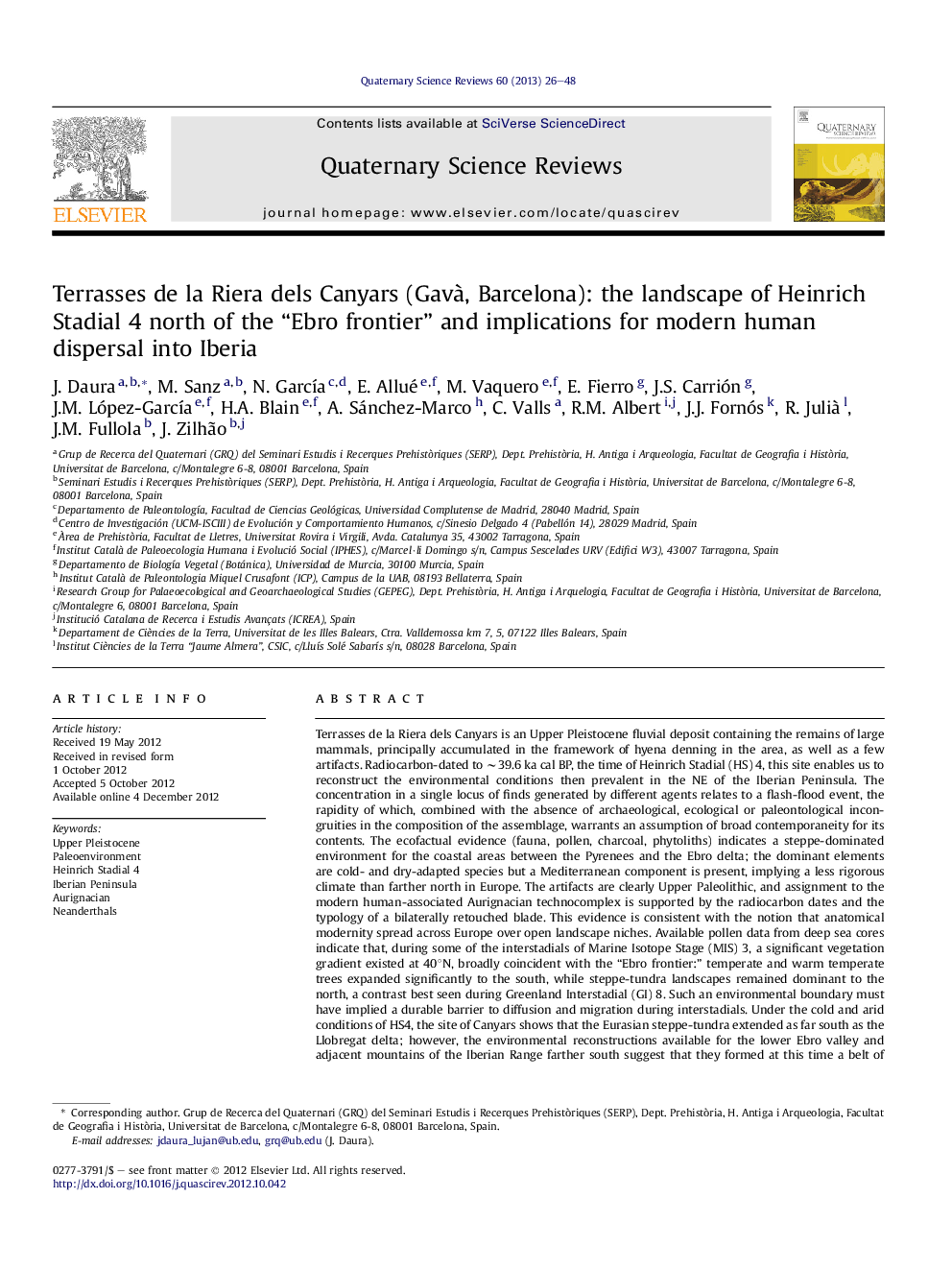| کد مقاله | کد نشریه | سال انتشار | مقاله انگلیسی | نسخه تمام متن |
|---|---|---|---|---|
| 4735575 | 1640874 | 2013 | 23 صفحه PDF | دانلود رایگان |

Terrasses de la Riera dels Canyars is an Upper Pleistocene fluvial deposit containing the remains of large mammals, principally accumulated in the framework of hyena denning in the area, as well as a few artifacts. Radiocarbon-dated to ∼39.6 ka cal BP, the time of Heinrich Stadial (HS) 4, this site enables us to reconstruct the environmental conditions then prevalent in the NE of the Iberian Peninsula. The concentration in a single locus of finds generated by different agents relates to a flash-flood event, the rapidity of which, combined with the absence of archaeological, ecological or paleontological incongruities in the composition of the assemblage, warrants an assumption of broad contemporaneity for its contents. The ecofactual evidence (fauna, pollen, charcoal, phytoliths) indicates a steppe-dominated environment for the coastal areas between the Pyrenees and the Ebro delta; the dominant elements are cold- and dry-adapted species but a Mediterranean component is present, implying a less rigorous climate than farther north in Europe. The artifacts are clearly Upper Paleolithic, and assignment to the modern human-associated Aurignacian technocomplex is supported by the radiocarbon dates and the typology of a bilaterally retouched blade. This evidence is consistent with the notion that anatomical modernity spread across Europe over open landscape niches. Available pollen data from deep sea cores indicate that, during some of the interstadials of Marine Isotope Stage (MIS) 3, a significant vegetation gradient existed at 40°N, broadly coincident with the “Ebro frontier:” temperate and warm temperate trees expanded significantly to the south, while steppe-tundra landscapes remained dominant to the north, a contrast best seen during Greenland Interstadial (GI) 8. Such an environmental boundary must have implied a durable barrier to diffusion and migration during interstadials. Under the cold and arid conditions of HS4, the site of Canyars shows that the Eurasian steppe-tundra extended as far south as the Llobregat delta; however, the environmental reconstructions available for the lower Ebro valley and adjacent mountains of the Iberian Range farther south suggest that they formed at this time a belt of semi-desert or steppe-desert landscapes, thus maintaining the boundary effect despite the climatic reversal. The persistence of such a boundary through HS4 and the interstadials that bracket it must have played a role in the delayed arrival of the Aurignacian (and modern humans) to southern and western Iberia, which continued to be settled by Middle Paleolithic Neanderthals well beyond 40 ka cal BP.
► Canyars is an archaeo-palaeontological fluvial deposit dated to the time of HS4.
► Dominant elements are cold and dry adapted species with a Mediterranean component.
► Aurignacian artifacts confirm the presence of early modern Europeans north of Ebro frontier.
► Eco-geographical barrier could explain the delay of modern human arrival to SW-Iberia.
Journal: Quaternary Science Reviews - Volume 60, 15 January 2013, Pages 26–48